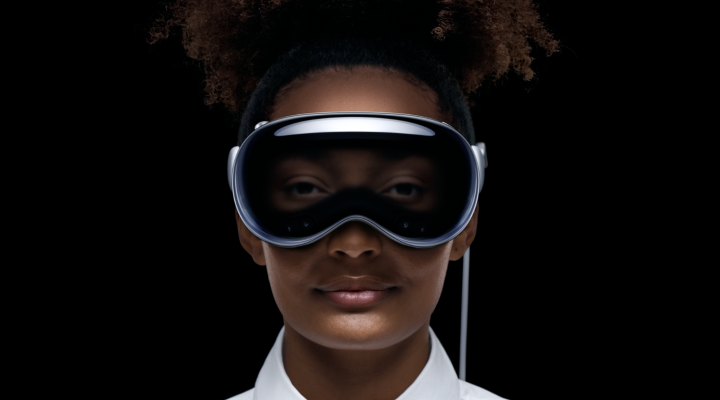
Apple announced its first XR headset, the Vision Pro, at WWDC 2023. This begins a new era of augmented and virtual reality hardware for the company, which has captured the lead in many other consumer electronics categories started by other manufacturers. What Apple adds to the equation is style, integration, and the overall thoughtfulness that comes from patient deliberation.
After years of rumors, the Vision Pro is finally here. Here’s what we know so far.
Apple began the event with a mention of Apple Silicon and the big speed and efficiency gains this family of chips brought to the Mac, including the new 15-inch MacBook Air and completely refreshed M2 Ultra Mac Pro. Apple Silicon is essential to the Vision Pro as well, since extended reality is among the most demanding computing tasks.
It looks slim, shiny, and decidedly Apple. It’s as if an iPhone were stretched and curved to wrap around the eyes, with glinting edges and a glossy glass face. The familiar digital crown that Apple placed on the Apple Watch and AirPods Max rests on the side of the Vision Pro. Even the band is reminiscent of an Apple Watch band.
More intriguing and possibly disturbing is the moment when a person is shown wearing the headset with their eyes visible on the front. When someone is nearby, your eyes are revealed. When you are immersed, Vision Pro shows that you are busy with a colorful view on the front of the headset.
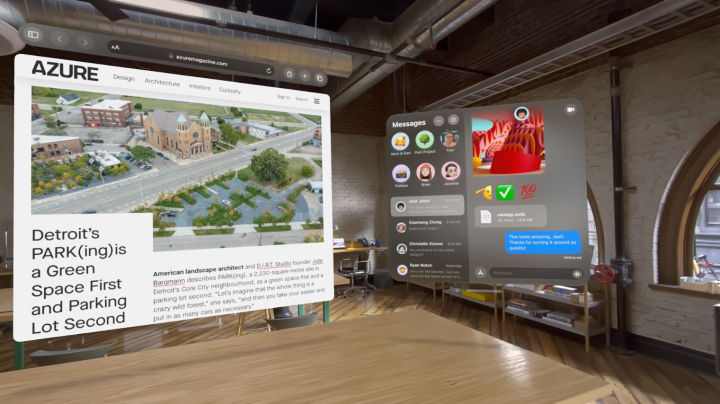
You use your hands and voice to interact, with the headset somehow recognizing finger taps and allowing intuitive control.
Multiple screens are shown, along with what appears to be a remarkably clear and realistic view of your physical surroundings, and 3D content can be grabbed and pulled out of a flat screen for manipulation.
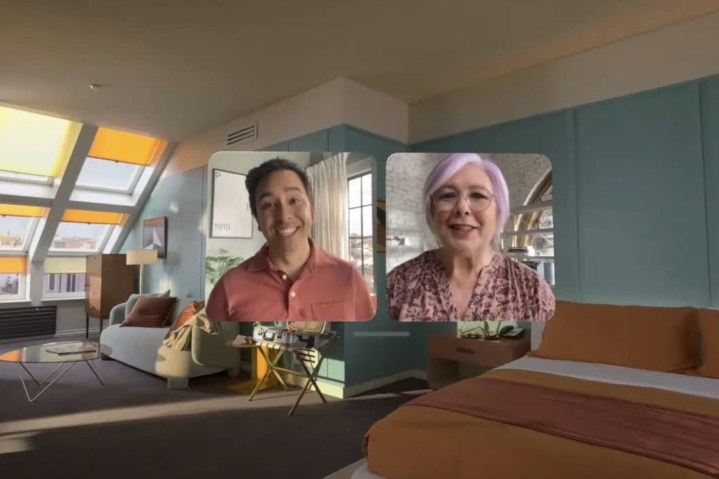
FaceTime allows you to see group calls with each person in a large virtual screen while you keep working on apps in your Apple Vision Pro. Panoramas captured with your iPhone can even surround you.
Apple Vision Pro will have over 100 games available on day one via Apple Arcade. Game controllers work with the Apple headset.
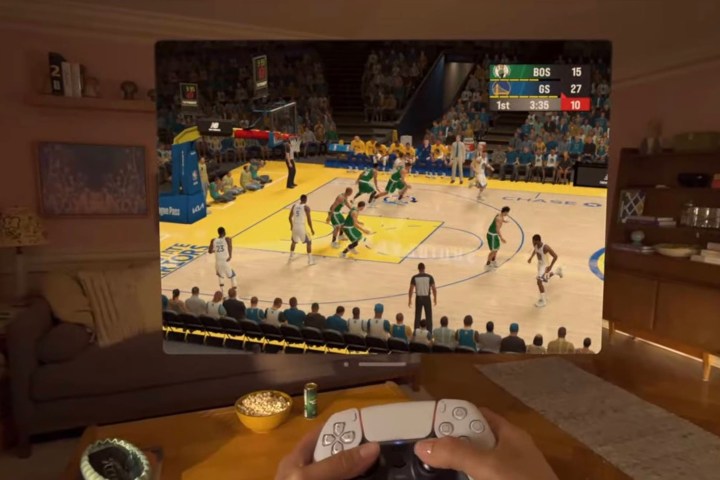
Apple CEO Tim Cook also announced a partnership with Disney to create experiences the latter company’s Bob Iger called “previously impossible.”
A few teasers showed XR examples of Mickey Mouse jumping out of a poster and the wearer’s reality cracking to show a view of the Marvel Universe, as well as immersive National Geographic and NBA experiences.

We’ll cover the full specifications in a separate post, but a few key details are the two chips, the superfast M2 chip for standalone performance and a new R1 processor for high-quality XR processing. This is dramatically greater performance than any other VR headset and opens up many more possibilities.
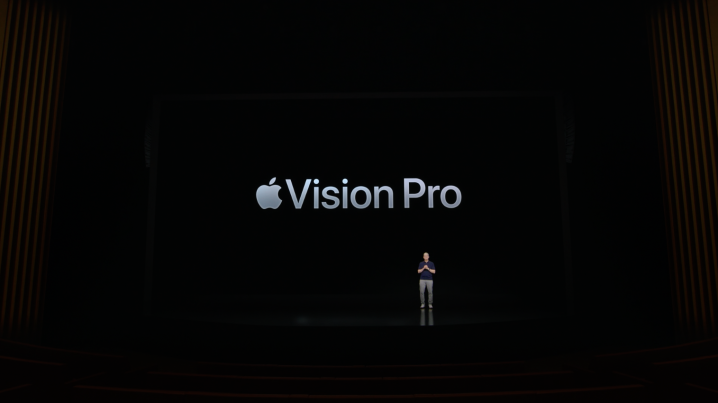
VisionOS handles Spatial frameworks, a 3D engine, foveated rendering processor, and real-time renderer. This is an entirely new platform that draws from Apple’s diverse product line.

The new visionOS App Store will use Optic ID iris verification for privacy and security.
With this being such a high-performance device with incredible potential, the price has to be on the expensive side. Most expected a $3,000 price tag. Apple went beyond that with a staggering $3,500 cost that will sadly put this revolutionary product out of reach for most people. This makes it clear the Vision Pro is a product for early adopters, app developers, and corporations. For reference, Microsoft’s HoloLens 2 starts at $3,500.
Apple says the Vision Pro headset will be available early next year.



